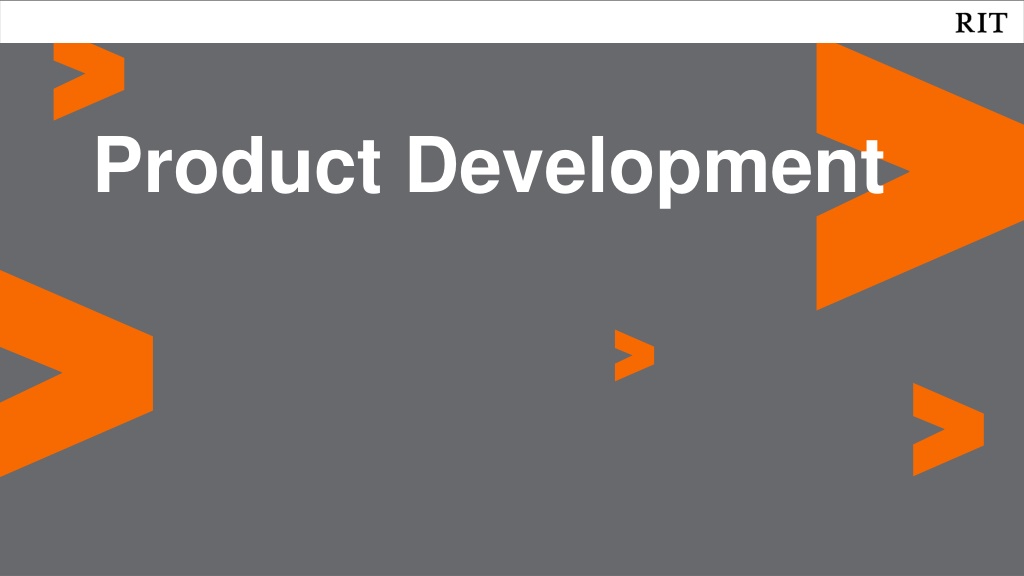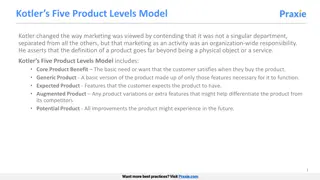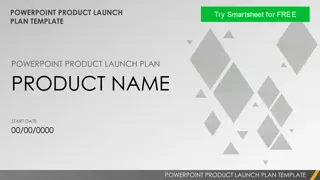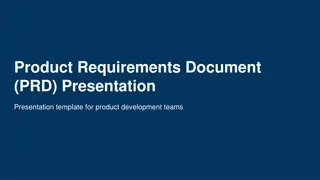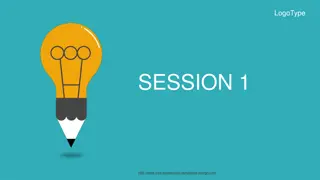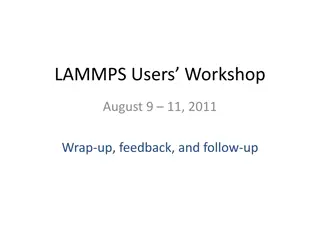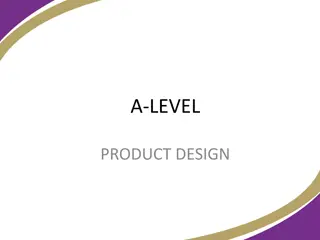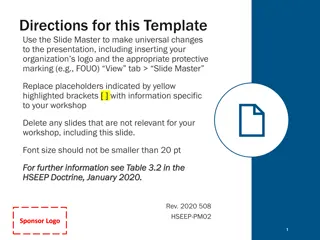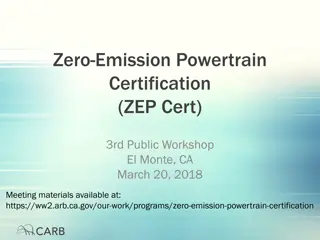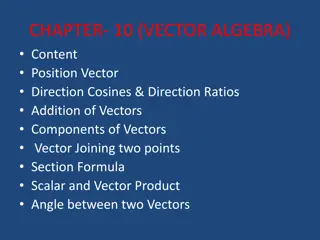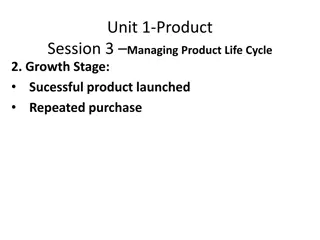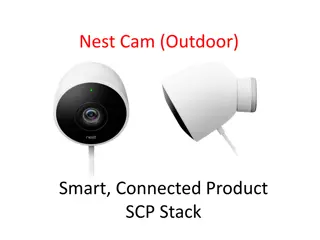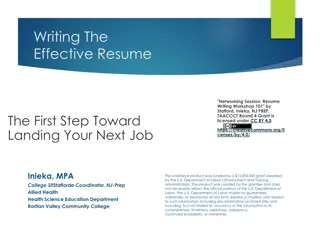Product Development Workshop and Activities
This content presents a comprehensive guide on product development, including steps such as defining product specifications, creating a bill of materials, and designing products. It includes interactive activities like brainstorming for a deserted island survival scenario and creating a bill of materials for a chosen product. The importance of answering key questions before production begins is emphasized, along with the tradeoff between time, quality, and cost in product development.
Download Presentation

Please find below an Image/Link to download the presentation.
The content on the website is provided AS IS for your information and personal use only. It may not be sold, licensed, or shared on other websites without obtaining consent from the author. Download presentation by click this link. If you encounter any issues during the download, it is possible that the publisher has removed the file from their server.
E N D
Presentation Transcript
| 2 Accompanying worksheet Please follow along with the worksheet titled IntroIE-6-ProdDevWS
| 3 Coming up with a product Before beginning to design a product: 5 W s: What, Why, where, when, and for who need to . If one of these isn t answered before production begins, issues will occur. For example: If the where isn t correct for a luxury car, you may be trying to sell it to a group of people that can t afford it. Another that must be decided upon before production can begin is the three part tradeoff of time, quality, and cost. Usually this means picking two of these qualities to focus
| 4 Activity: Surviving a Deserted Island Take 5-10 minutes to think of three things that could help you if you were on a deserted island. Some examples of things you might want could be a shovel, a tent, or a fishing pole. You could even come up with a new product idea! After coming up with your products, try to fill in the questions on the worksheet for this activity.
| 5 Bill of materials A bill of materials is a way to organize all of the parts in a product, or assembly, into an easy to read format that usually takes into account the order that things must be mad in. Try to come up with a list of the parts needed to make the chair on the right. Our labels and Bill of Materials are on the next slide.
| 6 Upper Back Part Quantity Description Middle Back Lower Back Upper Back 1 Upper Side Lower Back 1 Cushion Middle Back 1 Seat Base Upper Ring Upper Side 2 Cushion 1 Leg Seat Base 1 Upper Ring 1 Leg 4 Bottom Ring Bottom Ring 1
| 7 Activity: Bill of Materials Creation Try to create a Bill of Materials for one of the products you chose to help you survive on the island. Sketching your product out can really help you decide on how many parts there are.
| 8 Designing your product What you did earlier is just an example of the first few phases of product development. After coming up with a rough outline of what the product should be, companies usually head into an in depth design phase. Normally, this involves the use of 3d modelling software, and then prototype versions.
| 9 After Production Even after production has started on a product, the process is not over. The team (you in this case) needs to fix issues found by customers in either the current or future versions, and needs to decide when to phase out production and support of older models. The easiest place to see this process is in phones where after roughly two years of sales, the phones are no longer sold in stores, and after 5-6 years are no longer supported by the manufacturer.
| 10 What kinds of engineers work on these projects? Project Manager: Makes sure all aspects of the project are going smoothly. Often in charge of making sure that things are completed within budget and before their due date. In charge of facilitating large discussions and decisions. Team Lead: Leader of a specific subteam within a project. The team can be made up of one type of engineer or multiple types. Team Member: Usually the workforce of the operation, usually makes less of the decisions and does more of the design work.
